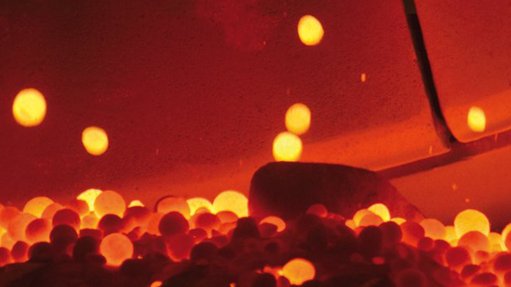Canada proposes sharp cut in oil and gas sector emissions by 2030
he Canadian government released draft regulations on Monday that would cap emissions of greenhouse gases from the oil and gas sector at 35% below 2019 levels by 2030, drawing condemnation from the industry that said it will force a production cut.
Oil and gas is Canada's highest-polluting industry and its emissions continue to rise, undercutting progress in many other parts of the economy. Ottawa will likely fall short of its commitment to reduce emissions by 40-45% from 2005 levels by 2030 unless the oil and gas sector intensifies efforts to decarbonise.
Federal Environment Minister Steven Guilbeault said the sector's profits hit C$66.6-billion in 2022 and the government wants to motivate producers to invest those profits in decarbonisation.
"This goes after pollution, not production," Guilbeault told a news conference. "We've worked carefully to develop what is technically feasible for the sector, to keep industry accountable to their own promise to be carbon neutral by 2050."
Canada is the world's fourth-largest oil producer and sixth-largest natural gas producer.
Ottawa said oil and gas production is still expected to grow 16% from 2019 levels by 2030-2032 even with the emissions cap in place, and there would only be a 0.1% reduction in Canadian GDP as a result.
The regulations will create a cap-and-trade system designed to recognize better-performing companies and incentivize higher-polluting firms to make their production processes cleaner.
Producers will be required to start reporting their emissions from 2026, and the first three-year compliance period will run from 2030 to 2032. The government said it will develop penalties for producers that do not comply.
Most of the emissions reductions are expected to come from cutting methane pollution and a proposed oil sands carbon capture project, federal Natural Resources Minister Jonathan Wilkinson said.
Prime Minister Justin Trudeau's Liberal government previously said it wanted the oil and gas industry to cut emissions by up to 38% from 2019 levels by 2030. Wilkinson said Ottawa settled on a 35% reduction after lengthy consultations to determine what was technically achievable for producers.
"If you start to go beyond what is achievable, you are moving this from an emissions cap to a production cap," he told Reuters in an interview.
Canada faces a federal election within the next year, which polls suggest Trudeau's Liberals will lose to the opposition Conservatives, led by Pierre Poilievre.
The Conservatives called the emissions cap an attack on the energy sector at a time of weak economic growth in Canada and said they would scrap the proposed policy if elected.
"Trudeau plans to crush the energy sector, putting hundreds of thousands of jobs at risk at the worst possible time," the Conservatives said in a statement.
INDUSTRY OPPOSITION
Oil and gas industry associations also pushed back against the cap, arguing it will kill jobs and cut tax revenue.
The Canadian Association of Petroleum Producers said it would likely deter investment in Canadian oil and natural gas projects, while the government of Alberta, Canada's main fossil fuel-producing province, said the cap would require a production cut of one million barrels per day by 2030.
"An emissions cap, which will act as a cap on domestic production of natural gas, will harm Canadian families and businesses by raising prices on energy," Francois Poirier, CEO of pipeline company TC Energy, said in a statement.
Climate advocates welcomed the draft regulations, although some urged the government to close what they described as a loophole allowing producers to pay into a decarbonisation program or buy greenhouse gas offset credits to cover up to 20% of their emissions.
"The rules must take effect sooner than the proposed 2030 timeline, and align with Canada's climate goal of a 40-45% emissions reduction by 2030," Environmental Defence said in a statement.
Formal consultations on the regulations will run from Nov. 9 until Jan. 8 of next year. The final version will be published in 2025.
Article Enquiry
Email Article
Save Article
Feedback
To advertise email advertising@creamermedia.co.za or click here
Press Office
Announcements
What's On
Subscribe to improve your user experience...
Option 1 (equivalent of R125 a month):
Receive a weekly copy of Creamer Media's Engineering News & Mining Weekly magazine
(print copy for those in South Africa and e-magazine for those outside of South Africa)
Receive daily email newsletters
Access to full search results
Access archive of magazine back copies
Access to Projects in Progress
Access to ONE Research Report of your choice in PDF format
Option 2 (equivalent of R375 a month):
All benefits from Option 1
PLUS
Access to Creamer Media's Research Channel Africa for ALL Research Reports, in PDF format, on various industrial and mining sectors
including Electricity; Water; Energy Transition; Hydrogen; Roads, Rail and Ports; Coal; Gold; Platinum; Battery Metals; etc.
Already a subscriber?
Forgotten your password?
Receive weekly copy of Creamer Media's Engineering News & Mining Weekly magazine (print copy for those in South Africa and e-magazine for those outside of South Africa)
➕
Recieve daily email newsletters
➕
Access to full search results
➕
Access archive of magazine back copies
➕
Access to Projects in Progress
➕
Access to ONE Research Report of your choice in PDF format
RESEARCH CHANNEL AFRICA
R4500 (equivalent of R375 a month)
SUBSCRIBEAll benefits from Option 1
➕
Access to Creamer Media's Research Channel Africa for ALL Research Reports on various industrial and mining sectors, in PDF format, including on:
Electricity
➕
Water
➕
Energy Transition
➕
Hydrogen
➕
Roads, Rail and Ports
➕
Coal
➕
Gold
➕
Platinum
➕
Battery Metals
➕
etc.
Receive all benefits from Option 1 or Option 2 delivered to numerous people at your company
➕
Multiple User names and Passwords for simultaneous log-ins
➕
Intranet integration access to all in your organisation


















